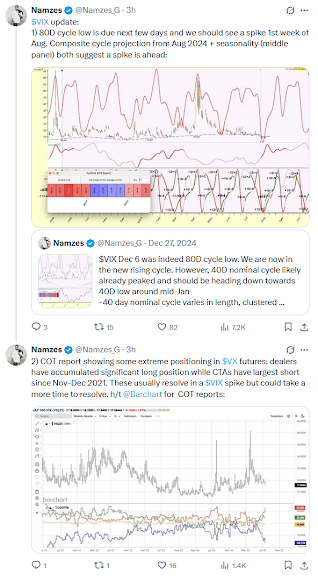Current market cycles suggest near-term weakness across the NASDAQ, S&P 500, and Dow Jones. The same pattern that accurately forecasted last April’s rally now points to a pullback.
but caution is warranted. Cycles and fundamentals together suggest a pullback is ahead. «
The 255-day S&P cycle, which has consistently identified past buy and sell points, indicates we are in a weak phase lasting into spring 2026, with the next major buying opportunity around the turn of the year.
remarkably well. Right now, we are in the weak part of that cycle. «
This weakness is not expected to trigger a crash, but rather a corrective phase after a strong run, followed by a probable year-end rally. The 2025 forecast of a bullish trend and March buying opportunity proved accurate; the 2026 outlook projects early weakness, then a recovery.
Fundamentally, stocks are overvalued relative to bonds and gold, historically a precursor to declines. This reinforces caution, even without technical confirmation.
So, I wouldn’t jump to Dalio’s conclusions. «
In summary: expect a corrective phase in equities, with parallel declines in gold and Bitcoin, but no imminent bear market. Year-end rally potential remains, and cycles continue to provide reliable foresight.
Reference:
Larry Williams (September 24, 2025) - Old Dogs, New Tricks: Bitcoin and Gold, and what's next for stocks. (video)
Larry Williams (September 24, 2025) - Old Dogs, New Tricks: Bitcoin and Gold, and what's next for stocks. (video)
17:19 - NASDAQ, S&P 500, Dow Jones
20:33 - Stocks Overvalued and 80 Year Cycle?
The 13-Week Cycle in Stocks.
See also:























































